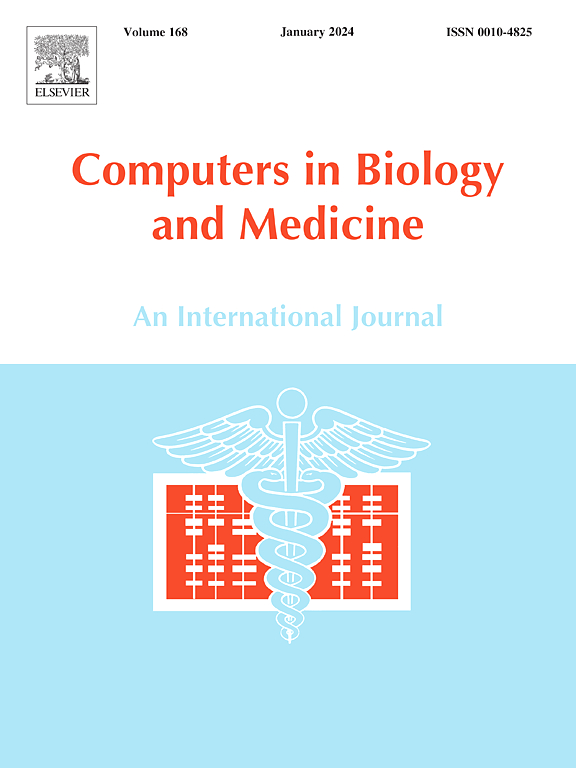使用你只看一次驱动方法的组织病理学自动细胞核分割的进展:系统回顾
IF 6.3
2区 医学
Q1 BIOLOGY
引用次数: 0
摘要
组织病理学图像分析在疾病诊断和治疗计划中起着关键作用,在很大程度上依赖于准确的细胞核分割来提取重要的细胞信息。近年来,人工智能(AI),特别是深度学习模型已经成功地应用于解决计算病理图像分析任务。基于卷积神经网络(CNN)架构的You Only Look Once (YOLO)目标检测框架因其实时处理能力在各个领域获得了广泛的关注。本系统综述旨在全面探索和评估基于yolo的方法在组织病理学图像领域内的核分割的进展、挑战和应用。这篇综述包括对最近文献的结构化分析,重点是利用YOLO变体进行细胞核分割。本文对关键方法、训练策略、数据集细节和性能指标进行了评估,以阐明YOLO在这种情况下的优势和局限性。此外,本文还强调了YOLO的独特特点,即能够有效地检测目标和描绘核结构,并与传统分割方法进行了比较分析。这篇系统综述强调了通过基于yolo的体系结构取得的有希望的结果,强调了它们在准确和快速的核分割方面的潜力。此外,它确定了持续存在的挑战,如处理细胞核外观的差异,优化组织病理图像的模型架构,以及提高不同数据集的泛化。从本综述中获得的见解可以为未来的研究方向和组织病理学中使用YOLO的细胞核分割方法的改进提供基础,促进疾病诊断和生物医学研究的进步。本文章由计算机程序翻译,如有差异,请以英文原文为准。
Advancements in automated nuclei segmentation for histopathology using you only look once-driven approaches: A systematic review
Histopathology image analysis plays a pivotal role in disease diagnosis and treatment planning, relying heavily on accurate nuclei segmentation for extracting vital cellular information. In recent years, artificial intelligence (AI) and in particular deep learning models have been applied successfully in solving computational pathology image analysis tasks. The You Only Look Once (YOLO) object detection framework, which is based on a convolutional neural network (CNN) architecture has gained traction across various domains for its real-time processing capabilities. This systematic review aims to comprehensively explore and evaluate the advancements, challenges, and applications of YOLO-based methodologies in nuclei segmentation within the domain of histopathological images. The review encompasses a structured analysis of recent literature, focusing on the utilization of YOLO variants for nuclei segmentation. Key methodologies, training strategies, dataset specifics, and performance metrics are evaluated to elucidate the strengths and limitations of YOLO in this context. Additionally, the review highlights the unique characteristics of YOLO that enable efficient object detection and delineation of nuclei structures, offering a comparative analysis against traditional segmentation approaches. This systematic review underscores the promising outcomes achieved through YOLO-based architectures, emphasizing their potential for accurate and rapid nuclei segmentation. Furthermore, it identifies persistent challenges such as handling variances in nuclei appearances, optimizing model architectures for histopathological images, and improving generalization across diverse datasets. Insights derived from this review can provide a foundation for future research directions and enhancements in nuclei segmentation methodologies using YOLO within histopathology, fostering advancements in disease diagnosis and biomedical research.
求助全文
通过发布文献求助,成功后即可免费获取论文全文。
去求助
来源期刊

Computers in biology and medicine
工程技术-工程:生物医学
CiteScore
11.70
自引率
10.40%
发文量
1086
审稿时长
74 days
期刊介绍:
Computers in Biology and Medicine is an international forum for sharing groundbreaking advancements in the use of computers in bioscience and medicine. This journal serves as a medium for communicating essential research, instruction, ideas, and information regarding the rapidly evolving field of computer applications in these domains. By encouraging the exchange of knowledge, we aim to facilitate progress and innovation in the utilization of computers in biology and medicine.
 求助内容:
求助内容: 应助结果提醒方式:
应助结果提醒方式:


